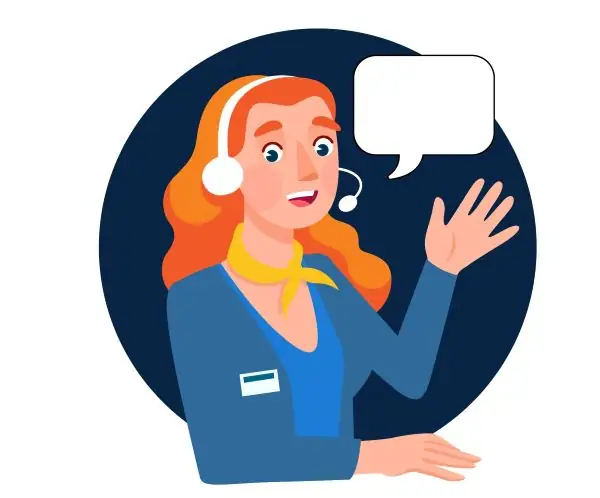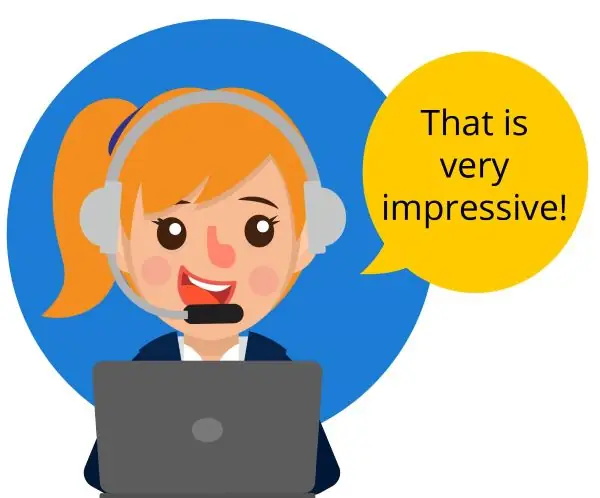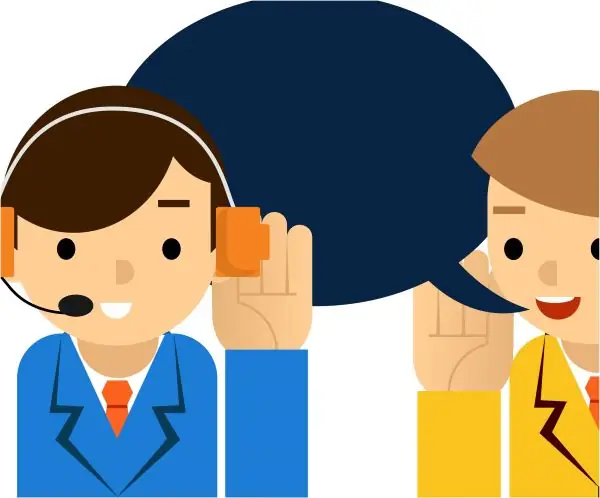What Is Rapport?
Rapport is a positive connection or relationship established between individuals, characterized by mutual understanding, trust, and empathy. In a call center scenario, building rapport with a customer might involve the agent actively listening to their concerns, addressing them with compassion, and showing genuine interest in helping.
For example, when a customer calls a tech support hotline with a frustrating issue, a skilled call center agent can build rapport by saying, "I understand how frustrating technical problems can be. Let's resolve this issue quickly so you can return to what you were doing." This statement conveys empathy and a willingness to assist, fostering a sense of rapport and trust between the agent and the customer.
SQM Group's customer service research shows that building customer rapport is the second biggest driver for achieving high call center Csat. Only an agent resolving a call is a more significant driver for providing high Csat.
Here are ten tips for building customer rapport in the call center:
1. Speak With a Smile

Have you ever heard the smile in someone's voice over the phone? How did you know they were smiling without being able to see them? Here is your answer: facial expressions strongly impact the tone of voice. Smiling affects the muscles in your face and throat, which can influence pitch, resonance, and voice clarity.
Try it yourself: record yourself speaking while frowning and smiling and notice the difference in tone of voice. Smiling while talking raises your pitch, making you sound more friendly and cheerful. It also creates a more open sound, which is often perceived as warmer and more inviting, and it can affect the clarity of your speech by making your articulation more precise.
Did you know that verbal language accounts for only 7% of how one is perceived? In other words, non-verbal cues such as tone of voice and body language make up 93% of people's opinions of you. Your posture affects the way you breathe, and the way you breathe affects the way you speak. When you're slouched, your breathing is restricted because your chest is more compressed. This makes it harder to speak and can make your voice sound dull and uninterested over the phone.
Therefore, when an agent smiles when they answer the phone, they are more likely to be perceived as warm, friendly, and trustworthy because of how their voice sounds to the customer.
2. Break the Ice

Set the tone for the phone conversation by starting with an icebreaker. For example, an agent could ask, "How's your day going so far?" or "I hope the weather where you are is not as cold as it is here." Questions like these that lead to mini conversations are great for determining the customer's mood and finding little points to connect on.
An example could be:
Agent: "How's your day going so far?"
Customer: "Not great. Work has been busy and stressful today."
Agent: "Oh no… that's no fun. Well, let's try to figure out your Wi-Fi quickly so that this doesn't take up too much of your time."
Starting the conversation with a little icebreaker is a great way to give the customer time to warm up to the agent before trying to resolve the call. It allows both the agents and the customer to relax before getting into the nitty-gritty of the call. When people are relaxed, they are also more trusting of others.
3. Mirror the Customer

Have you ever noticed someone cross their legs immediately after you do? Or have you ever started speaking with an accent when talking to someone with one? This is called the chameleon effect, also known as mimicry or mirroring, and it's a social phenomenon in which individuals unconsciously imitate the behavior, mannerisms, and body language of those they are interacting with. This can include copying posture, speech patterns, word choice, and emotional tone or expression.
The chameleon effect occurs instinctively and is a nonverbal form of social influence that can profoundly impact interpersonal interactions. It helps build trust and connection between people by creating a sense of similarity and rapport. If someone is speaking to you calmly and slowly, you might unconsciously copy them by also speaking in the same fashion.
When one person mimics the behavior of another, it signals to the other person that they are on the same wavelength and can relate to one another. This sense of similarity fosters a feeling of connection and can lead to increased empathy and understanding.
For example, if the customer is describing an experience as “amazing”, the agent should also refer to that experience as “amazing”. Similarly, if a customer is speaking slowly, the agent should also slow down their way of speaking. Overall, the chameleon effect is a powerful tool for building rapport and strengthening social bonds, as it enhances mutual comfort and facilitates smoother communication.
When people perceive that someone is mirroring their actions, they tend to view that person more positively and trust them more, as it implies a shared perspective and common ground.
4. Team Up With the Customer

A customer calls an ISP call center because they are having trouble connecting to their Wi-Fi. Read the below agent responses and notice the difference:
- "You’re having problems connecting your laptop to the Wi-Fi, so let’s work together to figure this out.”
- “You’re having problems connecting your laptop to the Wi-Fi, so I’ll try to help you.”
Notice that the first makes the customer feel like the agent is on their team, whereas the second does not. Collaborating with the customer and involving them in the troubleshooting process is important, rather than lecturing them or telling them what to do.
People who are talked at don't feel a connection to the speaker. Whereas people who are involved in problem-solving together and who actively interact develop a stronger bond while simultaneously developing a sense of psychological ownership over whatever they're working on.
5. Be Yourself

This is perhaps one of the most important ways to build rapport and gain someone’s trust. People trust authenticity. When you are genuine and true to your own values, beliefs, and personality, it signals to others that you are trustworthy and not trying to deceive or manipulate them.
This authenticity encourages a sense of trust and comfort, making people feel more relaxed and open in your presence. Moreover, when you are yourself, you are more likely to find common ground and shared interests with others, strengthening your connection and rapport, as it creates a basis for relatable and meaningful conversations.
Here is an example of a conversation where an agent adds their own personal touch:
Customer: “My two-year-old broke my computer, so I need to pay my bill over the phone.”
Agent: “Oh no! Well, I always say having a two-year-old is like having a blender, but you don’t have a top for it.”
Customer: “Haha, that’s right!”
So don’t fear going off script and adding your own personal touch to the conversation - whether that means adding some humor to the conversation or being naturally empathetic because of a shared experience with the customer.
6. Step Into the Customer's Shoes

An agent should imagine themselves in the customer’s shoes to better understand the customer. This demonstrates empathy and a genuine understanding of the customer's perspective and needs. This empathetic approach shows the customer that the agent cares about their concerns and is willing to see the situation from their point of view.
Stepping into the customer’s shoes validates the customer's feelings and creates a sense of trust, as the customer feels heard and valued. Furthermore, this helps the agent tailor their responses and solutions more effectively. The agent can provide more personalized assistance by understanding the customer's emotions, challenges, and expectations. This not only builds rapport but also enhances customer satisfaction and loyalty.
7. Use the Customer's Name

Using a customer's name during a call is a simple yet powerful way to enhance the customer service experience. It establishes a personal connection between the agent and the customer. Hearing one's name being used demonstrates that the agent is attentive and focused on the individual's needs, fostering a sense of importance and respect.
A good tip is for agents to write down the customer’s name phonetically at the beginning of the call to avoid mispronouncing their name based on the spelling. It sounds much friendlier and more personal to say “Thank you, John” rather than simply “Thank you.”
It’s important to not overuse the customer’s name as this can come off as unnatural and forced. Use the customer’s name only a couple of times throughout the call, and only when appropriate.
Using a customer's name can improve communication and engagement during the call. It grabs the customer's attention and keeps them actively involved in the conversation. This small but significant customer service technique can go a long way in building trust, rapport, and satisfaction.
8. Praise the Customer

A call center agent should praise the customer during a call to create a positive and supportive interaction. Praising the customer not only helps in building rapport and boosting their confidence but also enhances the overall customer experience. It can lead to increased customer satisfaction, improved brand loyalty, and potentially higher success rates in issue resolution, as customers are more likely to cooperate and engage positively when they feel appreciated and respected.
For example, if a customer is experiencing difficulties with their internet, yet they seem to understand the potential issues causing these difficulties, the agent could say: “You have a good understanding of the issue.”
9. Meet Expectations

When customers reach out to a company or agent, they often have certain expectations regarding the level of service, the resolution of their issues, and the overall experience. When those expectations are met or exceeded, it reinforces their trust in the agent and the company.
Fulfilling customer expectations demonstrates that the agent is attentive and capable, which, in turn, makes the customer feel valued and respected. It reassures them that their concerns are being taken seriously and their time and effort are appreciated. This satisfaction and trust are fundamental for building rapport because customers are more likely to engage in open and constructive communication when they believe their needs are being met.
It’s usually a good idea for the agent to check with the customer to make sure they have addressed and resolved the customer’s call reason at the end of the call. This shows that the agent is dedicated to meeting or exceeding the customer’s expectations. For example:
Agent: “Did I answer all of your questions?”
Customer: “Yes, thanks.”
Agent: “Great! Is there anything else I can help you with today?”
10. Listen Actively

Last but not least, it is crucial for agents to listen to customers on the phone actively. This means putting aside distractions and giving the customer your full attention. Agents should ask clarifying questions and provide verbal signals to the customer that they are listening, such as saying “mhm” or “okay” during small breaks in the conversation.
It is also helpful to repeat back what the customer was saying to ensure mutual understanding. For example:
“These are the main points that I have heard so far…”
“It sounds like you are unhappy with our billing.”
Active listening demonstrates empathy, ensures a deeper understanding of customer needs, and leads to more effective problem-solving, ultimately improving customer satisfaction and building trust.
